D
Dave Coster
Guest
COLD IN TIMBERLAND
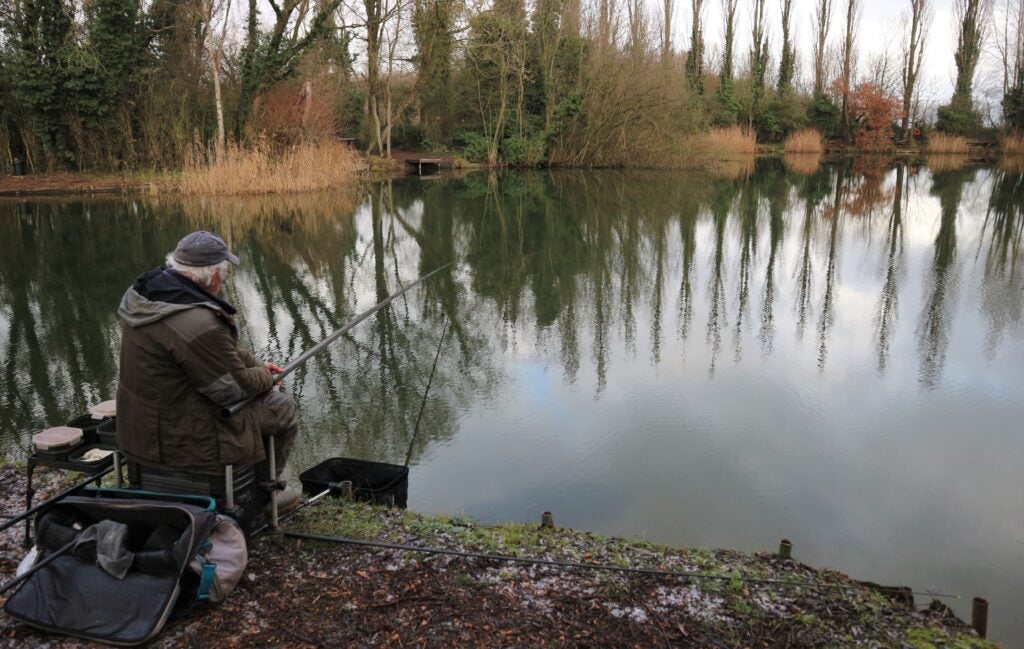
When a mate invited me on an outing to an old clay pit, a picture of a muddy hole in the ground filled with murky water came to mind. Instead, I discovered a beautifully mature lake, deep in the Lincolnshire countryside, on the outskirts of a small village called Timberland. It was winter, with frost on the ground, and I could see a big sheet of ice over on the far bank. That didn’t bother me because the place had a fishy feel to it, plus it was deep, which helps when it’s cold. I kept things simple, setting up two top-four pole rigs, one with a slightly strung bulk and one with an olivette. I had decided to try punched bread first, not knowing anything about the venue. I cupped in a helping of crumb and spent a few minutes taking stock of the place. It looked more like an estate lake now, with the owner’s stunning house and manicured lawn opposite, along with an island, backwater, plenty of trees, bushes, reed beds and several bays to explore.
THE OTHER DAVE
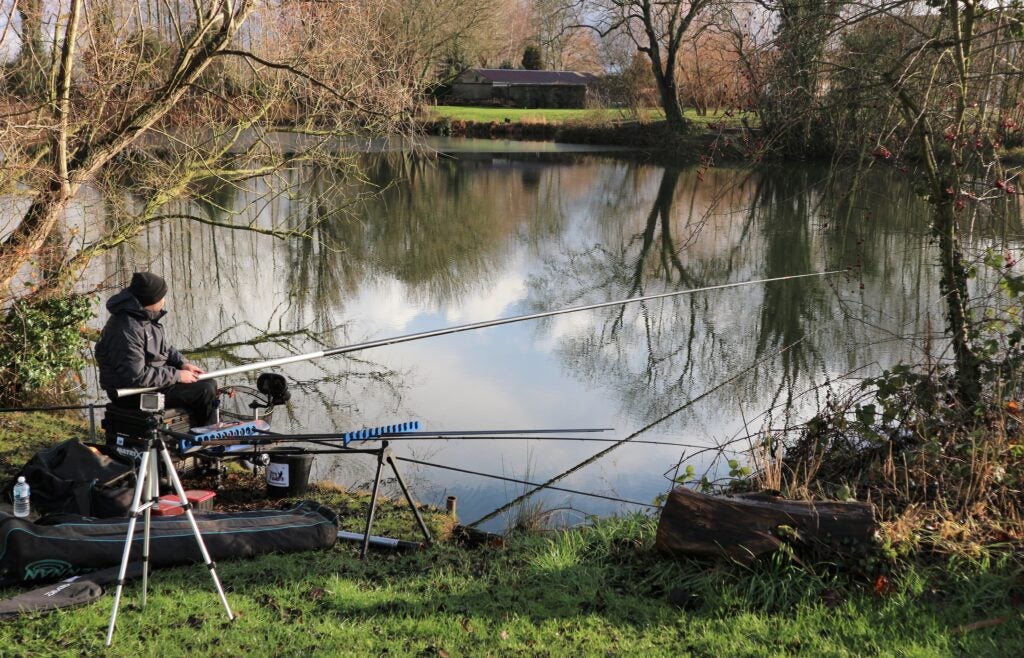
Dave Eastwood had set up pole gear too, just around the corner from me. He lives a bit closer in nearby Sleaford, which is how he discovered Peacock Waters, where a day ticket costs a reasonable £6 on the bank. Dave’s approach was similar to mine, using deep water 1g-plus pole floats, but combined with a groundbait, maggot and worm attack. He had also set up a feeder rod, but after a few trial chucks with it, told me he wasn’t confident with that method. It was very deep out in the middle and felt silty when retrieving the end tackle. It was slow to begin with, so I laboured through the first hour trying small pellets of punched bread on the hook, enduring several squally sleet showers. I did get a few slight indications, but nothing positive enough to convert into anything. I began to catapult a few casters over the same feed line, hooking a red maggot first. This resulted in positive bites and a few small perch, roach and hybrids.
FIGURING IT OUT
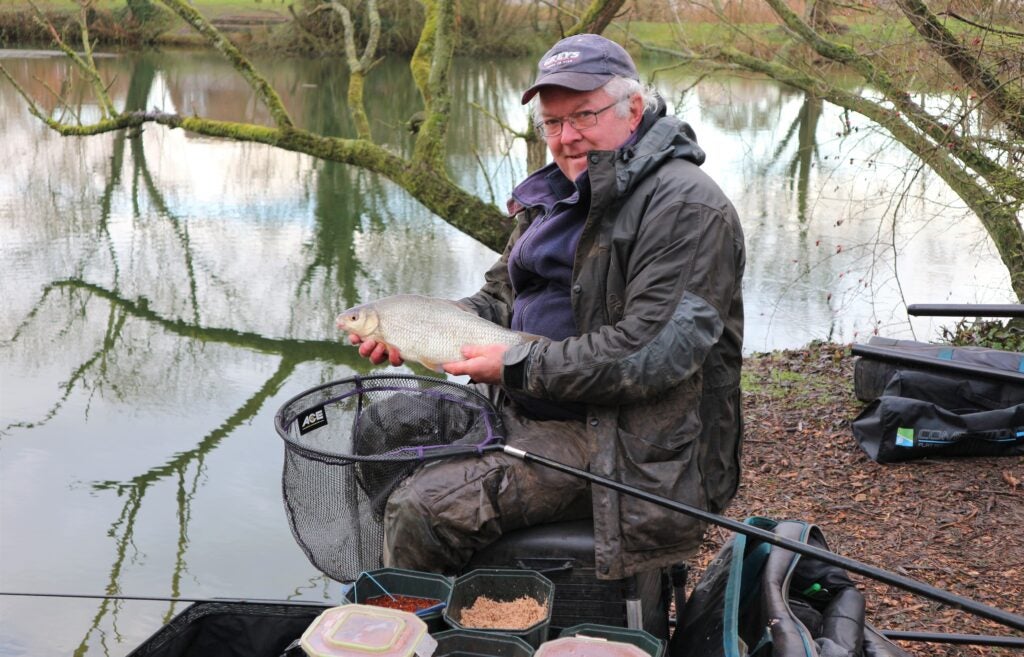
It wasn’t an easy session. The frost on the ground failed to melt and the big sheet of ice on the surface in the distance didn’t shrink back at all. But gradually, dinking casters in every 10 minutes, my swim came to life. Red maggot gained bites quickly, but resulted in small fish. It took longer to get a response with a single caster, but the bigger roach this tempted required a landing net. Dave was catching too by this stage, a nice mixture of roach, perch, hybrids and skimmers. Nothing massive but keeping busy. Although we were both putting a few pounds together, it was never going to turn into a bagging session, more a typical hard graft, winter day on the bank scenario. However, I eventually hooked into something a lot feistier, turning out to be a rocket-propelled hybrid, which gave me a good run-around on light pole gear. A few more quality roach followed, along with another big hybrid. I was more than happy with that.
GETTING WARMER
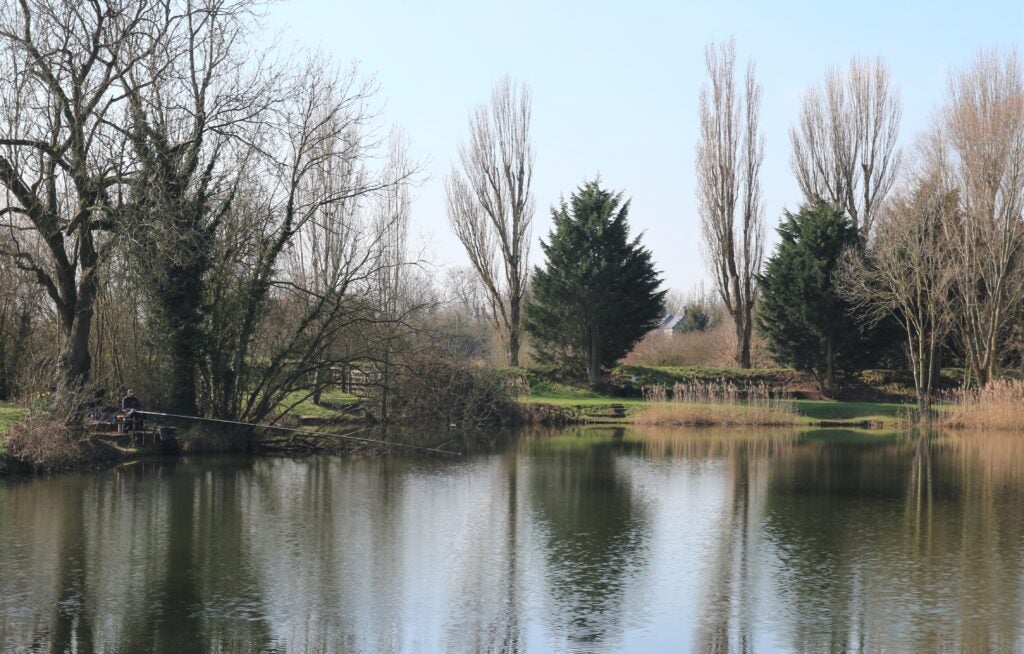
A return visit several weeks later rewarded us with a touch of Spring in the air. This time I opted for a peg in front of the big house and the converted barn that sits next to it. Although a day ticket fishery, onsite accommodation is also offered, plus caravan parking for holidaymakers. All this is ideal for anglers who want to spend several days by the water, with the potential of catching plenty of fish. I could see Dave in the distance, using pole tactics again, but fancied a change myself. I set up waggler and feeder tackle. I was where the backwater meets the lake, on an island that’s accessible by a footbridge. The owner dropped by and told me the pool behind gets stuffed with big carp when it’s warmer, also that the lake held big perch, rudd, roach, crucians, tench, bream and elusive stillwater chub. Although it was very deep in front of me, plumbing around I discovered a nice shelf over to my right, where it shelved up to 10ft at the end of the island.
MYSTERY FACTOR
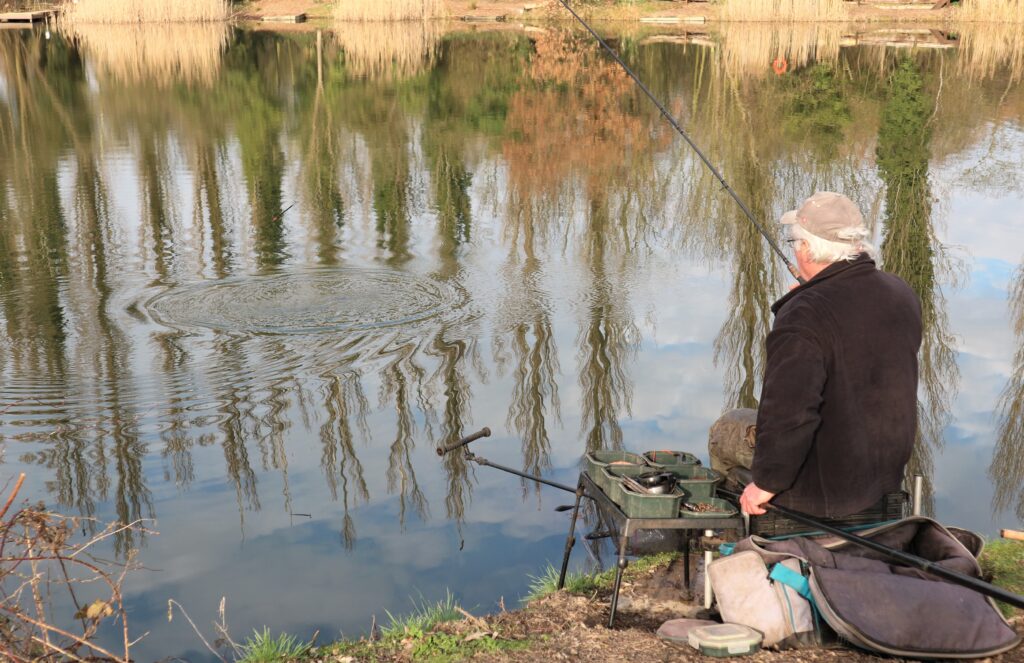
The bit I like most about exploring new places is not knowing what might work or turn up. There certainly appeared to be plenty of different species to target, but the trick would be finding them in such a deep place. I had a few experimental chucks out into open water with a groundbait feeder and it was a long way down to the bottom. I put some grub out and went on the waggler, but it took ages to get a bite. The water still had an icy green tinge to it and when I eventually received some interest, I failed to connect with whatever was out there. I kept feeding that part of the swim and tried the feeder again, which resulted in two quick bream, followed by a long blank spell. Back on the waggler and my steady loose feeding at last stirred things up. I caught some quality roach, perch and a skimmer. The feeder line was still dead when I tried that once more, but it didn’t matter because some cracking hybrids turned up on the float.
TIGHT MARGINS
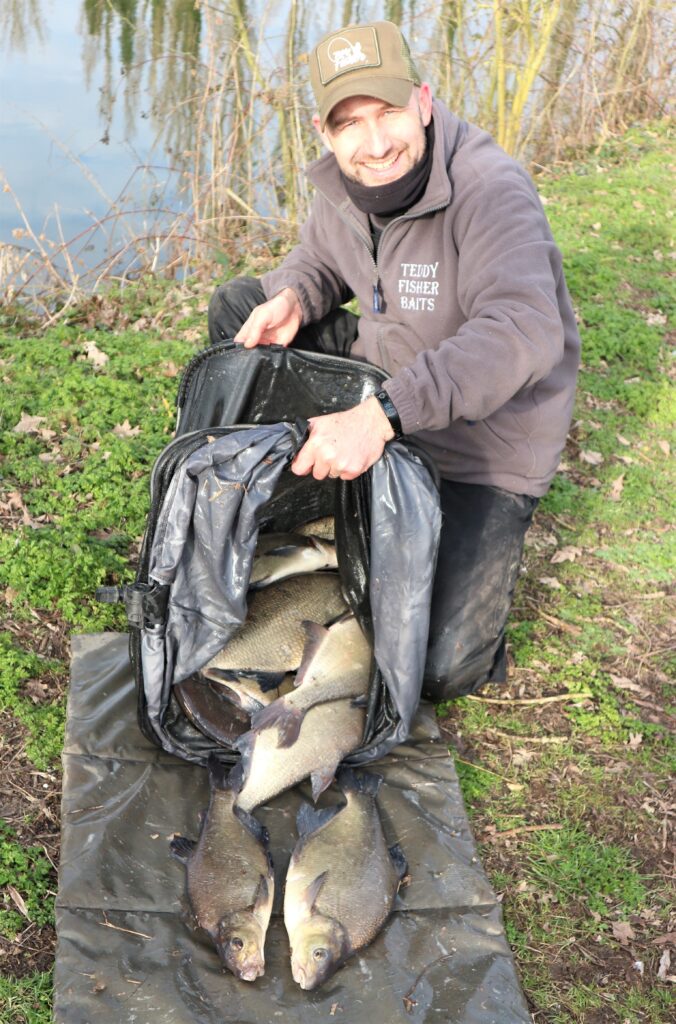
Dave caught loads of bream on the pole, only interrupted by a big carp that wallowed around his peg for ages before surrendering. The fishery owner had told me that a few days before a guy landed a twenty pounder on pole tackle, which was an amazing feat. It was interesting that Dave had found the bream stacked up closer in. I’ve noticed on many other deep venues that fish tend to show best not too far out, or well off bottom. I suspect in the deepest areas the water is a lot colder and almost liquid mud closer to the bottom. You could be putting a feeder out, not knowing if it was sinking out of sight. The only attention mine got was those two bites out of the blue, on a long hook length as the tackle settled. Otherwise, I was left wondering if the absence of any other indications was due to everything being obscured by soft silt. One thing I had noticed, was a lot of fish activity over in a reedy bay, which is where I intended to try next time.
THE BAY
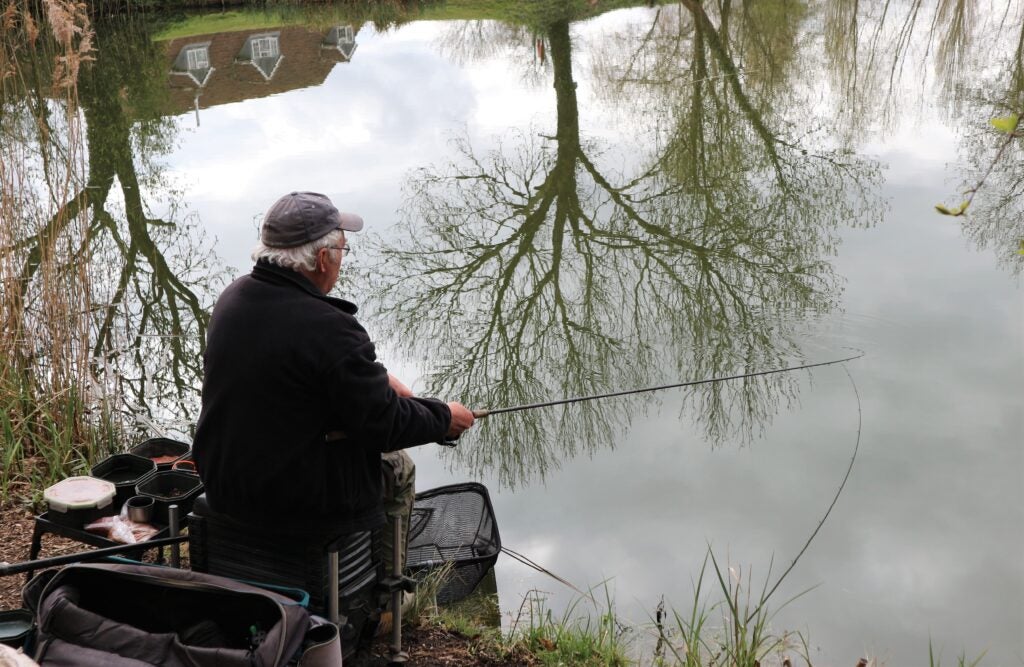
When I next returned to the clay pit, I found the reed-lined bay vacant, and it still looked inviting. It was deep over there too and I thought about setting up a pole, but it would be tricky getting tackle where I wanted. All the fish activity I had spotted last trip was right down in an inaccessible and overgrown corner some 20 metres away. I set up a waggler again and found good depth, just a few feet away from the thick bed of reeds that lined the bank. Although nothing was topping, I could see fish were knocking about, parting the stems occasionally as they moved through. I also spotted a long black shape, which looked like one of those elusive chub the owner had told me about. I trickled a few 4mm pellets and casters into the target area with a catapult, giving it a good 15 minutes before casting my float down there. When I did, the tackle hardly settled and my waggler disappeared, hooking into something decent straight away.
GOOD SPOT
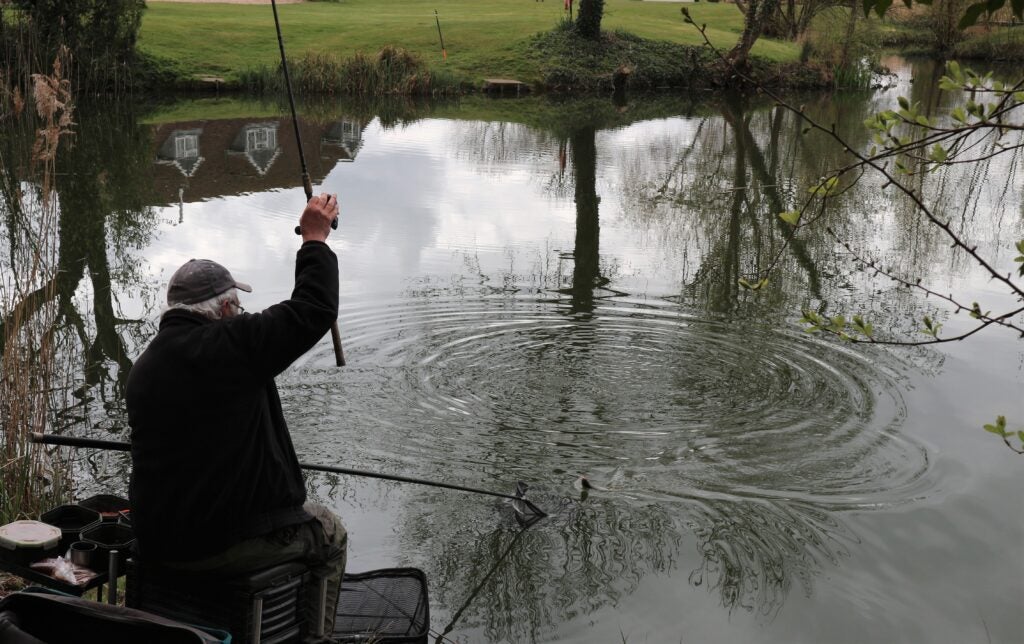
It’s nice when a plan comes together while getting to grips with new venues, finding some surprises along the way. It was fair-sized rudd that turned up first, mostly on the drop or just after the tackle settled. The rudd were on red maggots almost instantly. I later found I could get a single dark caster through them, waiting a bit longer for some interest and when that came it was from quality roach. I tried a soft pellet on the hook and waited even longer for a bite, resulting in a good skimmer. I could see that chub-like shape drifting in and out of the reeds occasionally, so when I fed casters next time I shallowed up. The sensitive tip on my insert waggler shot under again, but it was a small rudd and the shadowy big fish bolted back into the thick cover. I tried not casting, just sitting there dinking in small amounts of casters and the dark shape drifted out again. If it was a chub, it was a big one. I cast again and the float quickly darted under.
STAYING ELUSIVE
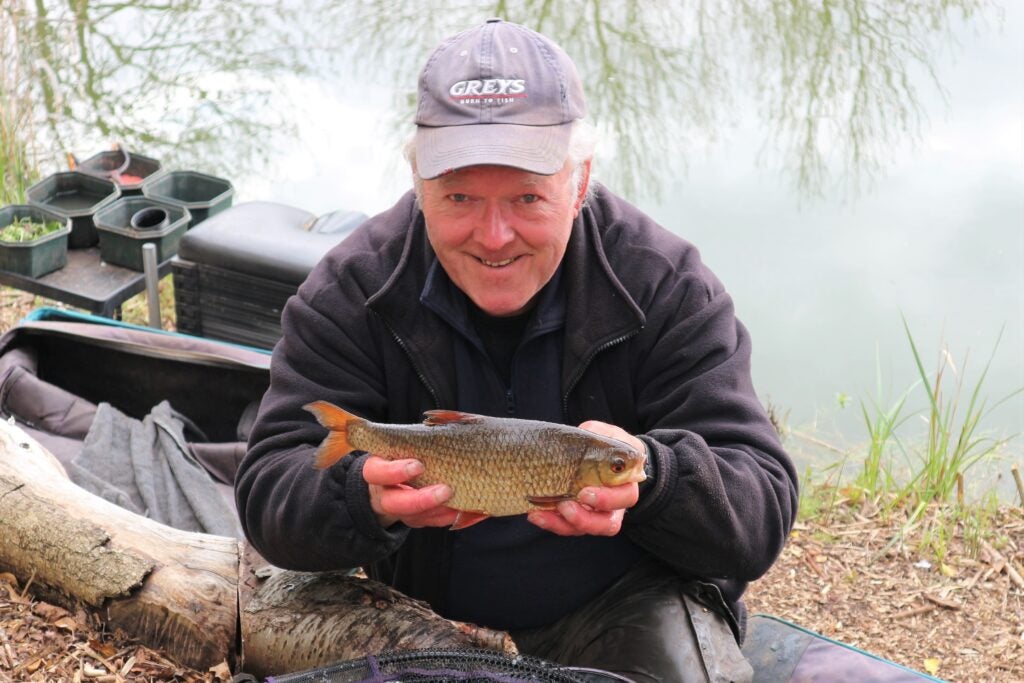
I was hoping for the type of thumping lunge big chub hit you with, but the fish I had hooked was skittering about too quickly. It still had some weight behind it and turned out to be a cracking roach, the best so far. I knew the chub tales were true because the other Dave had caught one the winter just past. But the fish in the bay was streetwise, coming out for some loose feed occasionally and quickly melting away when I cast towards it. I did think once again that I might have hooked a chub, but it turned out to be a small and powerful carp. After I put that back, a bream turned up next, in between wading through small fish. Towards the end of the session, I decided to up the loose feed, to try and get through the bits and pull something bigger. A few half-decent roach turned up, but nothing as big as the one I caught previously. I was just beginning to think that might have been a loner when it was rod-bending time again.
MYSTERIOUS FISH
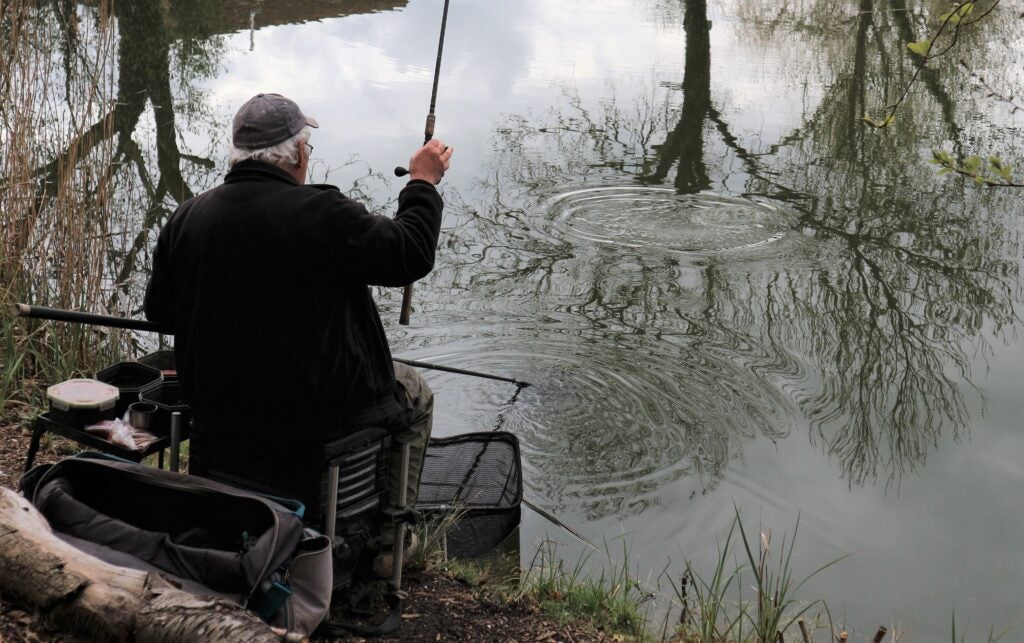
I wasn’t sure what was attached as it gave a good account of itself on my relatively light tackle. I saw the flash of a big silvery flank a few times and a hint of orange/red fins. I played it carefully and when the fish surfaced I could see it was another one of those hybrids, similar to the ones I had caught on previous visits, but bigger again. I don’t mind catching these fish at all. They are wild and interesting, fighting like demons and growing to a good size. I used to love catching this cross-species over in Ireland, where they turned up in loughs, rivers and canals. In some places they were the main fish you caught and locals were beginning to think they might be breeding. I’m not convinced about that, although they often patrolled around in packs, even in the massive game fishing waters like Lough Corrib. I once fished from an island on that massive stillwater and witnessed some huge hybrids coming out, from a place not noted for coarse fish.
ANOTHER LATECOMER
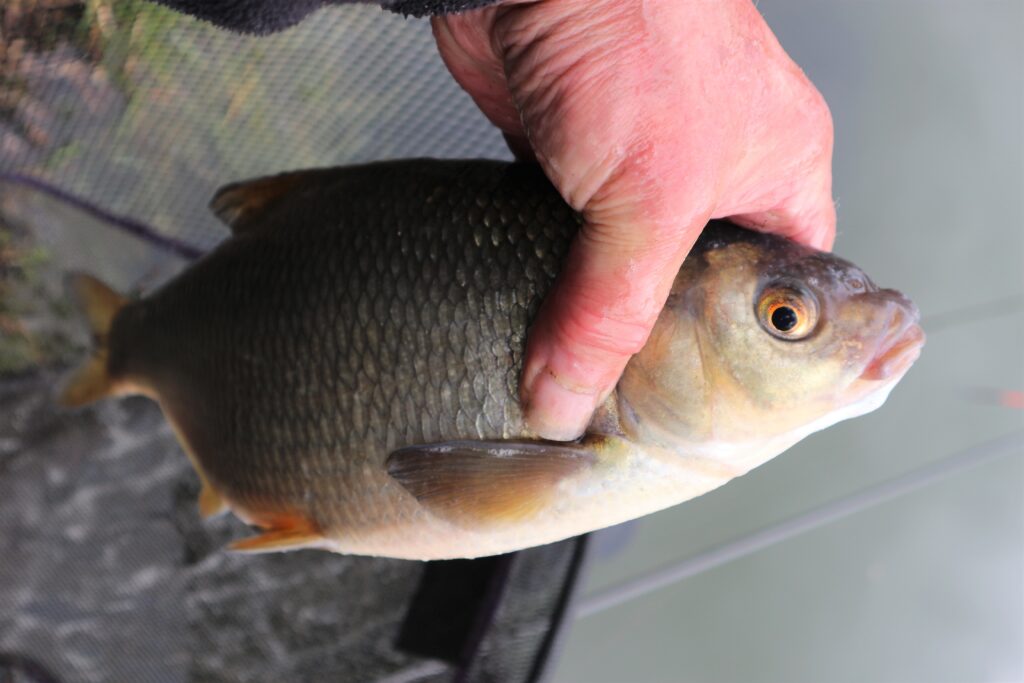
It wasn’t long before I hooked into another fighting force, that looked even more like a giant roach when I eventually netted it. That was until I lifted it out and saw those tell-tale signs of a hybrid again. There was a little bit of bronze in the scales, a longer anal fin and those paler eyes that give the game away. Some hybrids seem to have more roach in them than others. They also look different, depending on the way you handle and hold them up, almost morphing into a roach one second and then looking more like a bream the next. Very odd. But I was more than happy coming into contact with these wonderful fish again, a long way from where I used to regularly bump into them. The old clay pit was proving an interesting find, especially with the chances of hooking a big stillwater chub. Apparently, they have been landed up to 7lbs, which are big fish for a relatively small pit. Shame the one in my swim didn’t want to play.
PIT STOPPING
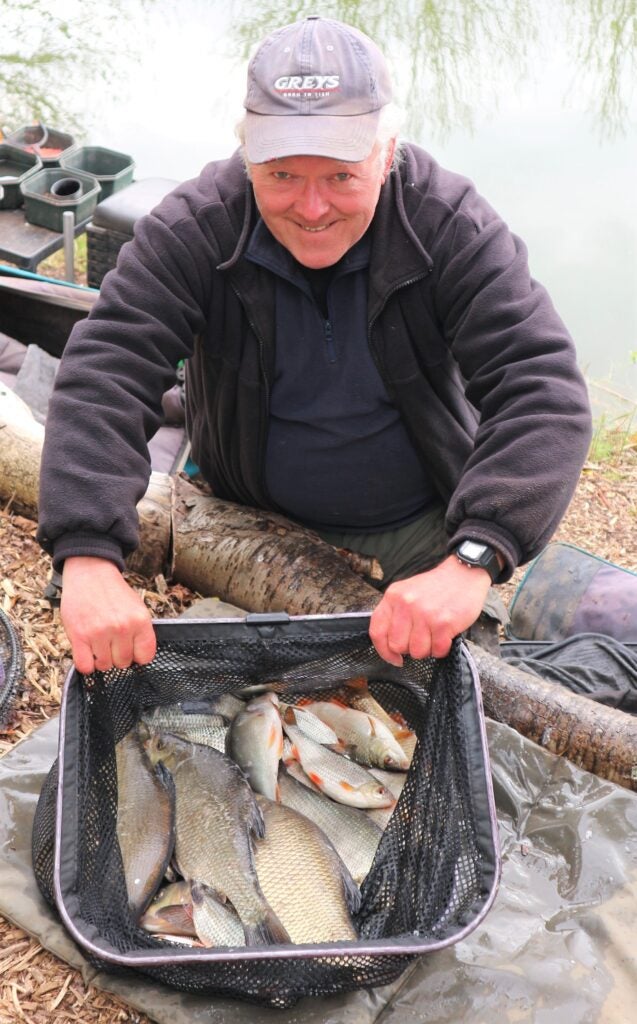
With some new venues I can take them or leave them, while on others I get caught up in their interesting atmospheres and features, which keep drawing me back. The old clay pit has become one of the latter. It’s just a nice spot to be in, made even better by its mysterious inhabitants. How did those hybrids grow so big and how did the chub get in? More importantly, how was I going to catch a chub, or two? A few days after taking this nice catch, I bumped into another angler who had caught some big chub from Peacock Waters. He reckoned it was all about picking the right swim. Apparently, the chub only tend to show consistently in a couple of spots. That makes sense to me after finding a similar trait on another lake that holds this species. On that strange water I have only ever caught chub from one swim. You could fish for years elsewhere and never see one. Peacock opens again March 1st and I’m definitely going back.
The post The Old Clay Pit first appeared on FishingMagic Magazine.
Continue reading...

When a mate invited me on an outing to an old clay pit, a picture of a muddy hole in the ground filled with murky water came to mind. Instead, I discovered a beautifully mature lake, deep in the Lincolnshire countryside, on the outskirts of a small village called Timberland. It was winter, with frost on the ground, and I could see a big sheet of ice over on the far bank. That didn’t bother me because the place had a fishy feel to it, plus it was deep, which helps when it’s cold. I kept things simple, setting up two top-four pole rigs, one with a slightly strung bulk and one with an olivette. I had decided to try punched bread first, not knowing anything about the venue. I cupped in a helping of crumb and spent a few minutes taking stock of the place. It looked more like an estate lake now, with the owner’s stunning house and manicured lawn opposite, along with an island, backwater, plenty of trees, bushes, reed beds and several bays to explore.
THE OTHER DAVE

Dave Eastwood had set up pole gear too, just around the corner from me. He lives a bit closer in nearby Sleaford, which is how he discovered Peacock Waters, where a day ticket costs a reasonable £6 on the bank. Dave’s approach was similar to mine, using deep water 1g-plus pole floats, but combined with a groundbait, maggot and worm attack. He had also set up a feeder rod, but after a few trial chucks with it, told me he wasn’t confident with that method. It was very deep out in the middle and felt silty when retrieving the end tackle. It was slow to begin with, so I laboured through the first hour trying small pellets of punched bread on the hook, enduring several squally sleet showers. I did get a few slight indications, but nothing positive enough to convert into anything. I began to catapult a few casters over the same feed line, hooking a red maggot first. This resulted in positive bites and a few small perch, roach and hybrids.
FIGURING IT OUT

It wasn’t an easy session. The frost on the ground failed to melt and the big sheet of ice on the surface in the distance didn’t shrink back at all. But gradually, dinking casters in every 10 minutes, my swim came to life. Red maggot gained bites quickly, but resulted in small fish. It took longer to get a response with a single caster, but the bigger roach this tempted required a landing net. Dave was catching too by this stage, a nice mixture of roach, perch, hybrids and skimmers. Nothing massive but keeping busy. Although we were both putting a few pounds together, it was never going to turn into a bagging session, more a typical hard graft, winter day on the bank scenario. However, I eventually hooked into something a lot feistier, turning out to be a rocket-propelled hybrid, which gave me a good run-around on light pole gear. A few more quality roach followed, along with another big hybrid. I was more than happy with that.
GETTING WARMER

A return visit several weeks later rewarded us with a touch of Spring in the air. This time I opted for a peg in front of the big house and the converted barn that sits next to it. Although a day ticket fishery, onsite accommodation is also offered, plus caravan parking for holidaymakers. All this is ideal for anglers who want to spend several days by the water, with the potential of catching plenty of fish. I could see Dave in the distance, using pole tactics again, but fancied a change myself. I set up waggler and feeder tackle. I was where the backwater meets the lake, on an island that’s accessible by a footbridge. The owner dropped by and told me the pool behind gets stuffed with big carp when it’s warmer, also that the lake held big perch, rudd, roach, crucians, tench, bream and elusive stillwater chub. Although it was very deep in front of me, plumbing around I discovered a nice shelf over to my right, where it shelved up to 10ft at the end of the island.
MYSTERY FACTOR

The bit I like most about exploring new places is not knowing what might work or turn up. There certainly appeared to be plenty of different species to target, but the trick would be finding them in such a deep place. I had a few experimental chucks out into open water with a groundbait feeder and it was a long way down to the bottom. I put some grub out and went on the waggler, but it took ages to get a bite. The water still had an icy green tinge to it and when I eventually received some interest, I failed to connect with whatever was out there. I kept feeding that part of the swim and tried the feeder again, which resulted in two quick bream, followed by a long blank spell. Back on the waggler and my steady loose feeding at last stirred things up. I caught some quality roach, perch and a skimmer. The feeder line was still dead when I tried that once more, but it didn’t matter because some cracking hybrids turned up on the float.
TIGHT MARGINS

Dave caught loads of bream on the pole, only interrupted by a big carp that wallowed around his peg for ages before surrendering. The fishery owner had told me that a few days before a guy landed a twenty pounder on pole tackle, which was an amazing feat. It was interesting that Dave had found the bream stacked up closer in. I’ve noticed on many other deep venues that fish tend to show best not too far out, or well off bottom. I suspect in the deepest areas the water is a lot colder and almost liquid mud closer to the bottom. You could be putting a feeder out, not knowing if it was sinking out of sight. The only attention mine got was those two bites out of the blue, on a long hook length as the tackle settled. Otherwise, I was left wondering if the absence of any other indications was due to everything being obscured by soft silt. One thing I had noticed, was a lot of fish activity over in a reedy bay, which is where I intended to try next time.
THE BAY

When I next returned to the clay pit, I found the reed-lined bay vacant, and it still looked inviting. It was deep over there too and I thought about setting up a pole, but it would be tricky getting tackle where I wanted. All the fish activity I had spotted last trip was right down in an inaccessible and overgrown corner some 20 metres away. I set up a waggler again and found good depth, just a few feet away from the thick bed of reeds that lined the bank. Although nothing was topping, I could see fish were knocking about, parting the stems occasionally as they moved through. I also spotted a long black shape, which looked like one of those elusive chub the owner had told me about. I trickled a few 4mm pellets and casters into the target area with a catapult, giving it a good 15 minutes before casting my float down there. When I did, the tackle hardly settled and my waggler disappeared, hooking into something decent straight away.
GOOD SPOT

It’s nice when a plan comes together while getting to grips with new venues, finding some surprises along the way. It was fair-sized rudd that turned up first, mostly on the drop or just after the tackle settled. The rudd were on red maggots almost instantly. I later found I could get a single dark caster through them, waiting a bit longer for some interest and when that came it was from quality roach. I tried a soft pellet on the hook and waited even longer for a bite, resulting in a good skimmer. I could see that chub-like shape drifting in and out of the reeds occasionally, so when I fed casters next time I shallowed up. The sensitive tip on my insert waggler shot under again, but it was a small rudd and the shadowy big fish bolted back into the thick cover. I tried not casting, just sitting there dinking in small amounts of casters and the dark shape drifted out again. If it was a chub, it was a big one. I cast again and the float quickly darted under.
STAYING ELUSIVE

I was hoping for the type of thumping lunge big chub hit you with, but the fish I had hooked was skittering about too quickly. It still had some weight behind it and turned out to be a cracking roach, the best so far. I knew the chub tales were true because the other Dave had caught one the winter just past. But the fish in the bay was streetwise, coming out for some loose feed occasionally and quickly melting away when I cast towards it. I did think once again that I might have hooked a chub, but it turned out to be a small and powerful carp. After I put that back, a bream turned up next, in between wading through small fish. Towards the end of the session, I decided to up the loose feed, to try and get through the bits and pull something bigger. A few half-decent roach turned up, but nothing as big as the one I caught previously. I was just beginning to think that might have been a loner when it was rod-bending time again.
MYSTERIOUS FISH

I wasn’t sure what was attached as it gave a good account of itself on my relatively light tackle. I saw the flash of a big silvery flank a few times and a hint of orange/red fins. I played it carefully and when the fish surfaced I could see it was another one of those hybrids, similar to the ones I had caught on previous visits, but bigger again. I don’t mind catching these fish at all. They are wild and interesting, fighting like demons and growing to a good size. I used to love catching this cross-species over in Ireland, where they turned up in loughs, rivers and canals. In some places they were the main fish you caught and locals were beginning to think they might be breeding. I’m not convinced about that, although they often patrolled around in packs, even in the massive game fishing waters like Lough Corrib. I once fished from an island on that massive stillwater and witnessed some huge hybrids coming out, from a place not noted for coarse fish.
ANOTHER LATECOMER

It wasn’t long before I hooked into another fighting force, that looked even more like a giant roach when I eventually netted it. That was until I lifted it out and saw those tell-tale signs of a hybrid again. There was a little bit of bronze in the scales, a longer anal fin and those paler eyes that give the game away. Some hybrids seem to have more roach in them than others. They also look different, depending on the way you handle and hold them up, almost morphing into a roach one second and then looking more like a bream the next. Very odd. But I was more than happy coming into contact with these wonderful fish again, a long way from where I used to regularly bump into them. The old clay pit was proving an interesting find, especially with the chances of hooking a big stillwater chub. Apparently, they have been landed up to 7lbs, which are big fish for a relatively small pit. Shame the one in my swim didn’t want to play.
PIT STOPPING

With some new venues I can take them or leave them, while on others I get caught up in their interesting atmospheres and features, which keep drawing me back. The old clay pit has become one of the latter. It’s just a nice spot to be in, made even better by its mysterious inhabitants. How did those hybrids grow so big and how did the chub get in? More importantly, how was I going to catch a chub, or two? A few days after taking this nice catch, I bumped into another angler who had caught some big chub from Peacock Waters. He reckoned it was all about picking the right swim. Apparently, the chub only tend to show consistently in a couple of spots. That makes sense to me after finding a similar trait on another lake that holds this species. On that strange water I have only ever caught chub from one swim. You could fish for years elsewhere and never see one. Peacock opens again March 1st and I’m definitely going back.
The post The Old Clay Pit first appeared on FishingMagic Magazine.
Continue reading...
